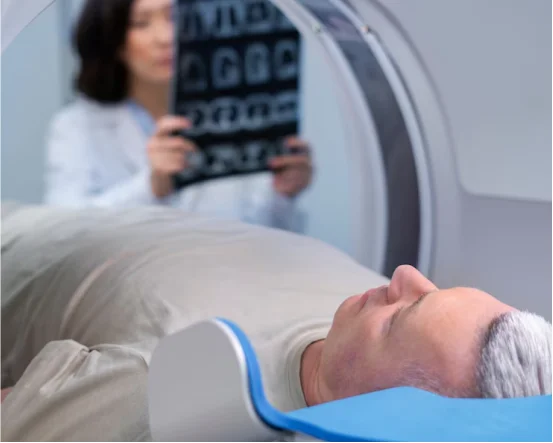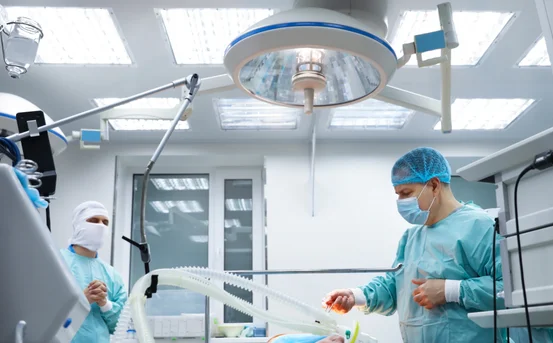Laryngectomy surgery is a life-changing yet often life-saving procedure, most commonly performed to treat advanced laryngeal (voice box) cancer. The operation involves the removal of the larynx, which leads to significant anatomical and functional changes particularly affecting speech, breathing, and swallowing. While the idea of undergoing a laryngectomy can be daunting, understanding the treatment process, rehabilitation, and post-operative support available can greatly ease a patient’s journey.
Facing a diagnosis that requires laryngectomy surgery can be overwhelming for any patient and their loved ones. The idea of removing the voice box a vital part of how we speak, breathe, and swallow brings a wave of questions, fears, and emotional challenges. However, for many individuals battling advanced laryngeal cancer, this surgery is not just a treatment option it’s a life-saving intervention.
What is Laryngectomy Surgery?
A laryngectomy is a surgical procedure that involves the complete or partial removal of the larynx (voice box). This organ is crucial for speaking, breathing, and protecting the airway during swallowing. Laryngectomy is most often performed to treat :-
-
Laryngeal cancer
-
Severe trauma to the larynx
-
Chronic laryngeal infections unresponsive to treatment
There are two types of laryngectomy :-
-
Partial Laryngectomy :- Removes only part of the larynx. The patient may retain some ability to speak naturally.
-
Total Laryngectomy :- Removes the entire larynx. Breathing is rerouted through a stoma (a permanent opening in the neck), and patients require alternative speech methods.
Why is Laryngectomy Performed?
The most common indication for laryngectomy is laryngeal cancer, especially when :-
-
The cancer is large or has spread deeply into tissues
-
Radiation or chemotherapy has failed
-
The cancer recurs after initial treatment
-
There’s risk of airway obstruction or severe complications
Other reasons include severe neck trauma (e.g., from an accident), radiation necrosis, or progressive non-cancerous diseases affecting the larynx.
Preoperative Evaluation and Preparation
Before undergoing laryngectomy, the medical team conducts a thorough evaluation that includes :-
-
Physical examination and medical history
-
Imaging tests (CT scan, MRI, PET scan)
-
Biopsy to confirm malignancy
-
Pulmonary evaluation for breathing capacity
-
Nutritional assessment
-
Psychological support and counseling
Patients are also introduced to speech therapists and stoma care nurses before the surgery to prepare them for post-operative rehabilitation and changes in communication.
The Laryngectomy Procedure: Step-by-Step
General Anesthesia
The patient is given general anesthesia, ensuring they remain unconscious and pain-free during the operation.
Surgical Removal
Depending on the type (partial or total), the surgeon removes the affected portion or the entire larynx. In a total laryngectomy, the trachea (windpipe) is disconnected from the mouth and connected to an opening (stoma) made in the neck for breathing.
Neck Dissection (if cancer has spread)
Sometimes, nearby lymph nodes and tissues are removed to prevent further cancer spread.
Reconstruction
The throat is reconstructed to ensure swallowing remains possible. A feeding tube may be temporarily placed to ensure proper nutrition during the healing phase.
Wound Closure and Stoma Formation
The neck incision is closed, and a permanent stoma is created for breathing.
Post-Surgical Recovery and Hospital Stay
The recovery period after laryngectomy surgery varies but usually includes :-
-
Hospital Stay :- 7–10 days
-
Nutritional Support :- Feeding tube (gastrostomy or nasogastric) used until swallowing is safe
-
Pain Management :- Through IV medications and gradually shifting to oral painkillers
-
Wound Care :- Regular cleaning of the surgical site and stoma
-
Drain Management :- Temporary surgical drains may be placed to remove fluid buildup
Monitoring for complications like infection, bleeding, and airway obstruction is vital during the initial recovery period.
Speech Rehabilitation After Laryngectomy
One of the most significant challenges after a total laryngectomy is the loss of natural voice. However, several speech rehabilitation options are available :-
Esophageal Speech
The patient learns to “swallow” air and release it through the esophagus to create sound. This requires significant practice and training.
Electrolarynx
A hand-held, battery-operated device is placed against the neck. It generates vibrations that the patient can articulate into speech.
Tracheoesophageal Puncture (TEP)
A small surgical opening between the trachea and esophagus is created, and a one-way valve (voice prosthesis) is inserted. It allows air to flow from the lungs into the esophagus, producing sound when the patient covers the stoma while speaking.
AAC Devices (Augmentative and Alternative Communication)
Text-to-speech apps and communication boards are used for non-verbal communication, especially in early recovery. Speech therapy is essential regardless of the method chosen. Early involvement of a speech-language pathologist (SLP) enhances outcomes significantly.
Living with a Stoma: Breathing and Hygiene
After laryngectomy, breathing occurs through the stoma. Patients must adapt to new hygiene and safety practices :-
-
Stoma Cleaning :- Daily cleaning to prevent mucus plugs or infection
-
Humidification :- Using humidifiers or stoma covers to prevent dry airway
-
Protective Measures :- Avoiding water entering the stoma while bathing
-
Mucus Management :- Regular suctioning or coughing techniques
Over time, patients learn to manage these changes independently with proper guidance from ENT specialists and stoma care nurses.
Diet and Nutrition Post-Laryngectomy
Initially, patients receive nutrition through a feeding tube. Once the throat heals, they gradually transition to oral intake.
-
Soft foods are introduced first
-
Swallowing therapy may be needed to ensure safe swallowing
-
Some patients may experience changes in taste or difficulty with certain foods
-
Adequate hydration is essential, as dry mouth is common
Emotional and Psychological Support
Laryngectomy impacts not just physical health but also mental well-being. Patients often face challenges related to :-
-
Loss of natural voice and communication
-
Altered body image due to the stoma
-
Social anxiety and depression
Support groups, mental health counseling, and family education are crucial aspects of holistic treatment after surgery.
Follow-Up and Long-Term Monitoring
Regular follow-up visits with an ENT surgeon and oncologist are necessary to :-
-
Monitor for cancer recurrence (if cancer was the cause)
-
Replace or maintain the voice prosthesis (TEP users)
-
Manage complications like fistulas, strictures, or granulation tissue
-
Continue speech therapy and swallowing exercises
Annual imaging, blood work, and stoma assessments are often part of the long-term care plan.
Conclusion
While laryngectomy surgery is a major life event, patients can lead fulfilling lives with the right treatment and support. With modern speech rehabilitation, stoma care education, and emotional counseling, many laryngectomy survivors return to work, enjoy hobbies, and actively participate in social life.























